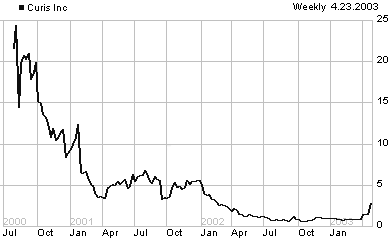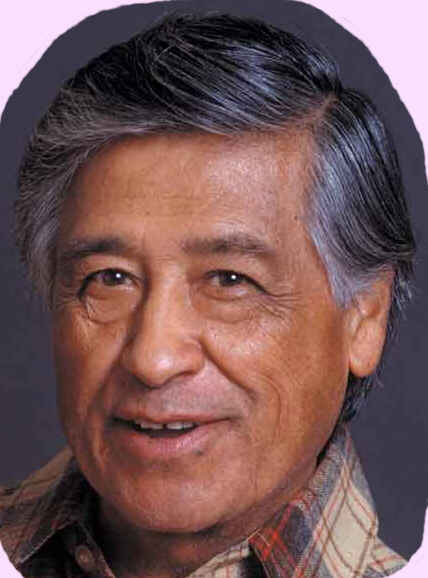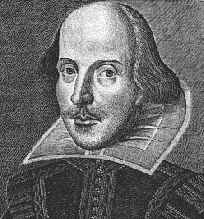^ Births
which occurred on an April 23:
1985
New Coke debuts: Coca-Cola Co. announces that it is changing the
99-year-old secret flavor formula for Coke. Negative public reaction would
eventually force the company to resume selling the original version as Classic
Coke, while the New Coke all but disappeared.
1976
Avui,
diario en catalán, aparece por primera vez.
1970
Reivindicación del conde don Julián, novela
de Juan Goytisolo, se publica.
1962 Nosaltres els valencians
de Joan Fuster Ortells se publica.
1957 Mirando hacia
atrás con ira, obra de teatro de John James Osborne,
se estrena.
1949 Las hortensias, libro
de relatos de Felisberto Hernández, se publica.
1947
Bernadette Devlin (McAliskey) (Irish civil rights leader)
1941 Paavo Tapio Lipponen, político y primer
ministro finlandés.
1940 Jaime Bateman Cayón
“el Flaco”, líder revolucionario colombiano.
1940 La invención de Morel, de Adolfo
Vicente Perfecto Bioy Casares, se publica.
1934 Irene
Iribarren, pintora española.
1928 Shirley Jane Temple Black,
Santa Monica Calif, (child actress: Little Miss Marker, Curly
Top, Heidi, The Little Colonel, Poor Little Rich Girl, Wee Willie Winkie,
Rebecca of Sunnybrook Farm; US ambassador to the United Nations and chief
of protocol)
1927 Manuel Rivera Hernández,
Spanish painter who died in 1994.
1926 Gerardo Rueda
Salaberry, pintor y escultor español.
1923 Manuel Mejía Vallejo, escritor colombiano.
1914
Georgii
Nikolaevich Polozii, Russian mathematician who died on 26 November
1968.
1910 Sheila
Scott Macintyre, Scottish mathematician who died on 21 March
1960.
1902 Halldór Kiljan Gudjónsson “Halldor
Laxness”, Icelandic novelist who was awarded the Nobel Prize
for Literature in 1955. He is considered the most creative Icelandic writer
of the 20th century. He died on 08 February 1998.
1899 Vladimir
Nabokov St Petersburg, novelist (Lolita, Ada)
1897
Lester Bowles Pearson (L) 14th Canadian Prime Minister (1963-68)
(Nobel Peace Prize 1957). He died on 27 December 1972.
1896
Vitascope system of movie projection first demonstrated —
Première of motion pictures (Koster and Bial's Music Hall, NYC)
1891 Sergey Prokofiev Ukraine, composer (Peter and the
Wolf). He died on 05 March 1953.
1867 Johannes Fibiger, Danish Nobel Prize-winning pathologist
(1926). He died on 30 January 1928.
1861 Carl Moll, Austrian artist who died in 1945. —
more with link to an image.
1858 Max
Karl Ernst Ludwig Planck,
German Nobel Prize-winning physicist (1918) who originated quantum theory,
mathematician. Planck died on 04 October 1947.
1856 Marco Fidel Suárez, escritor y político
colombiano.
1852 Edwin Markham, US poet and lecturer
who died on 07 March 1940.
1842 Fritz Beinke,
German artist who died on 16 December 1907.
1834 La
conjuración de Venecia - año de 1310 , obra
romántica de Francisco
de Paula Martínez de la Rosa [10 Mar 1787 – 07 Feb 1862],
se estrena en el madrileño teatro del Príncipe.
1833 Antoine Vollon, French artist who died on 27 August
1900. — MORE
ON VOLLON AT ART “4” APRIL
with links to images.
1820 James Sant, British artist who died on 12 July 1916.
— MORE
ON SANT AT ART “4” APRIL with
links to images.
^
1813 Stephen
Arnold Douglas, US Democratic party leader, congressman,
senator, orator, and presidential candidate. Debated Lincoln in 1858
and defeated him in senatorial election. Lost to Lincoln in 1860 presidential
election. Douglas died on 03 June 1861.
Douglas
espoused the cause of popular sovereignty in relation to the issue
of slavery in the territories before the US Civil War (1861–1865).
He was re-elected senator from Illinois in 1858 after a series of
eloquent debates with the Republican candidate, Abraham Lincoln [12
Feb 1809 – 15 Apr 1865],
who defeated him in the presidential election two years later.
Douglas left New England at the age
of 20 to settle in Jacksonville, Illinois,where he quickly rose to
a position of leadership in the Illinois Democratic Party. In 1843
he was elected to the U.S. House of Representatives; one of its youngest
members, Douglas gained early prominence as a dedicated worker and
gifted speaker. Heavyset and only five feet four inches tall, he was
dubbed the “Little Giant” by his contemporaries.
Douglas embraced a lifelong enthusiasm for national expansion, giving
consistent support to the annexation of Texas (1845), the Mexican
War (1846–1848), taking a vigorous stance toward Great Britain
in the Oregon boundary dispute (1846), and advocating both government
land grants to promote transcontinental railroad construction and
a free homestead policy for settlers.
Douglas was elected in 1846 to the US Senate, in which he served until
his death; there he became deeply involved in the nation's search
for a solution to the slavery problem. As chairman of the Committee
on Territories, he was particularly prominent in the bitter debatesbetween
North and South on the extension of slavery westward. Trying to remove
the onus from Congress, he developed the theory of popular sovereignty
(originally called squatter sovereignty), under which the people in
a territory would themselves decide whether to permit slavery within
their region's boundaries. Douglas himself was not a slaveholder,
though his wife was. He was influential in the passage of the Compromise
of 1850 (which tried to maintain a congressional balance between free
and slave states), and the organization of the Utah and New Mexico
territories under popular sovereignty was a victory for his doctrine.
The climax of Douglas' theory was reached
in the Kansas–Nebraska Act (1854), which substituted local options
toward slavery in the Kansas and Nebraska territories for that of
congressional mandate, thus repealing the Missouri Compromise of 1820.
The act's passage was a triumph for Douglas, although he was bitterly
condemned and vilified by antislavery forces. A strong contender for
the Democratic presidential nomination in both 1852 and 1856, he was
too outspoken to be chosen by a party that was still trying to bridge
the sectional gap.
The Supreme
Court struck indirectly at popular sovereignty in the Dred Scott Decision
(1857),which held that neither the Congress nor territorial legislatures
could prohibit slavery in a territory. The following year Douglas
engaged in a number of widely publicized debates with Lincoln in a
close contest for the Senate seat in Illinois, and although Lincoln
won the popular vote, Douglas was elected 54 to 46 by the legislature.
In the debates, Douglas enunciated his famous “Freeport Doctrine,”
which stated that the territories could still determine the existence
of slavery through unfriendly legislation and the use of police power,
in spite of the Supreme Court decision. As a result, Southern opposition
to Douglas intensified, and he was denied reappointment to the committee
chairmanship he had previously held in the Senate.
When the “regular” (Northern) Democrats nominated him
for president in 1860, the Southern wing broke away and supported
a separate ticket headed by John C. Breckinridge of Kentucky. Although
Douglas received only 12 electoral votes, he was second to Lincoln
in the number of popular votes polled. Douglas then urged the South
to acquiesce in the results of the election. At the outbreak of the
Civil War, he denounced secession as criminal and was one of the strongest
advocates of maintaining the integrity of the Union at all costs.
At President's Lincoln's request, he undertook a mission to the Border
States and to the Northwest to rouse Unionist sentiments among their
citizenry. Douglas' early and unexpected death was partly the result
of these last exertions on behalf of the Union. |
1812 Sir Frederick Whitaker, English politician and businessman;
prime minister of New Zealand (1863-1864,1882-1883). He died on 04 December
1891.
1791 James Buchanan (Fed/Dem) 15th US president
(1857-61), in Franklin County, Pennsylvania. He died on 01 June 1868.
1775 Joseph
Mallord William Turner, British painter who died on 19 December
1851, specialized in landscapes and seascapes, considered by the French
Impressionists as having given art a turn that impressed them. —
MORE
ON TURNER AT ART “4” APRIL
with links to many images and extensive biography.
1628 Johann
van Waveren Hudde, Dutch mathematician, burgomeister of Amsterdam
(1672-1702), who died on 15 April 1704. He worked on maxima and minima and
the theory of equations. He gave an ingenious method to find multiple roots
of an equation which is essentially the modern method of finding the highest
common factor of a polynomial and its derivative. He also worked on optics,
producing microscopes and constructing telescope lenses. Hudde corresponded
with Huygens
[14 Apr 1629 – 08 Jul 1695] on problems of canal maintenance, probability
and life expectancy. In 1657 Hudde directed the flooding of parts of Holland
to block the advance of the French army.
1605 Boris Godunov
tsar of Muscovy (1598-1605) in Time of Troubles.
^
1564 William Shakespeare.
According to tradition, the great English
dramatist and poet William Shakespeare is born in Stratford-on-Avon
on 23 April 1564. It is impossible to be certain of the exact day
on which he was born, but church records show that he
was baptized on 26 April, and three days was a customary amount
of time to wait before baptizing a newborn. Shakespeare's
date of death is conclusively known, however: it was 23 April
1616. He was 52 years old and had retired to Stratford three years
before. Although few plays have been performed or analyzed as extensively
as the 38 plays ascribed to William Shakespeare, there are few surviving
details about the playwright's life. This dearth of biographical information
is due primarily to his station in life; he was not a noble, but the
son of John Shakespeare, a leather trader and the town bailiff. The
events of William Shakespeare's early life can only be gleaned from
official records, such as baptism and marriage records. He probably
attended the grammar school in Stratford, where he would have studied
Latin and read classical literature. He did not go to university but
at age 18 married Anne Hathaway, who was eight years his senior and
pregnant at the time of the marriage. Their first daughter, Susanna,
was born six months later, and in 1585 William and Anne had twins,
Hamnet and Judith. Hamnet, Shakespeare's only son, died 11 years later,
and Anne Shakespeare outlived her husband, dying in 1623. Nothing
is known of the period between the birth of the twins and Shakespeare's
emergence as a playwright in London in the early 1590s, but unfounded
stories have him stealing deer, joining a group of traveling players,
becoming a schoolteacher, or serving as a soldier in the Low Countries.
The first reference to Shakespeare
as a London playwright came in 1592, when a fellow dramatist, Robert
Greene, wrote derogatorily of him on his deathbed. It is believed
that Shakespeare had written the three parts of Henry
VI by then. In 1593, Venus
and Adonis was Shakespeare's first published poem, and he
dedicated it to the young Henry Wriothesley, the 3rd earl of Southampton.
In 1594, having probably composed, among other plays, Richard
III, The
Comedy of Errors, and The
Taming of the Shrew, he became an actor and playwright for
the Lord Chamberlain's Men, which became the King's Men after James
I's ascension in 1603. The company grew into England's finest, in
no small part because of Shakespeare, who was its principal dramatist.
It also had the finest actor of the day, Richard Burbage, and the
best theater, the Globe, which was located on the Thames' south bank.
Shakespeare stayed with the King's Men until his retirement and often
acted in small parts.
By 1596,
the company had performed the classic Shakespeare plays Romeo
and Juliet, Richard
II, and A
Midsummer Night's Dream. That year, John Shakespeare was
granted a coat of arms, a testament to his son's growing wealth and
fame. In 1597, William Shakespeare bought a large house in Stratford.
In 1599, after producing his great historical series, the first and
second part of Henry
IV and Henry
V, he became a partner in the ownership of the Globe Theatre.
The beginning of the 17th century saw
the performance of the first of his great tragedies, Hamlet.
The next play, The
Merry Wives of Windsor, was written at the request of Queen
Elizabeth I, who wanted to see another play that included the popular
character Falstaff. During the next decade, Shakespeare produced such
masterpieces as Othello,
King
Lear, Macbeth,
and The
Tempest.
In 1609, his
sonnets,
probably written during the 1590s, were published. The 154 sonnets
are marked by the recurring themes of the mutability of beauty and
the transcendent power of love and art.
Shakespeare died in Stratford-on-Avon on 23 April
1616. Over the next centuries, his plays would be performed and
read more often and in more nations than any other's. In a million
words written over 20 years, he captured the full range of human emotions
and conflicts with a precision that remains timeless. As his great
contemporary the poet and dramatist Ben Jonson said, "He was not of
an age, but for all time." |
1522 Saint Catherine, Italian Dominican mystic who died
on 02 February 1590.
|
 On
a 23 April:
On
a 23 April: 



 En muchas ocasiones, la realidad supera a la ficción. Y eso mismo
es lo que sucedió con la vida y la obra de Miguel de Cervantes Saavedra.
Su biografía, sin duda, puede ser considerada como una verdadera
novela de aventuras, muy al estilo de la época que le tocó
vivir. Su vida, más prolija en experiencias negativas que en vivencias
positivas, fue curiosamente paralela a la de su más famosa creación:
el ingenioso hidalgo Don Quijote de la Mancha.
En muchas ocasiones, la realidad supera a la ficción. Y eso mismo
es lo que sucedió con la vida y la obra de Miguel de Cervantes Saavedra.
Su biografía, sin duda, puede ser considerada como una verdadera
novela de aventuras, muy al estilo de la época que le tocó
vivir. Su vida, más prolija en experiencias negativas que en vivencias
positivas, fue curiosamente paralela a la de su más famosa creación:
el ingenioso hidalgo Don Quijote de la Mancha. 